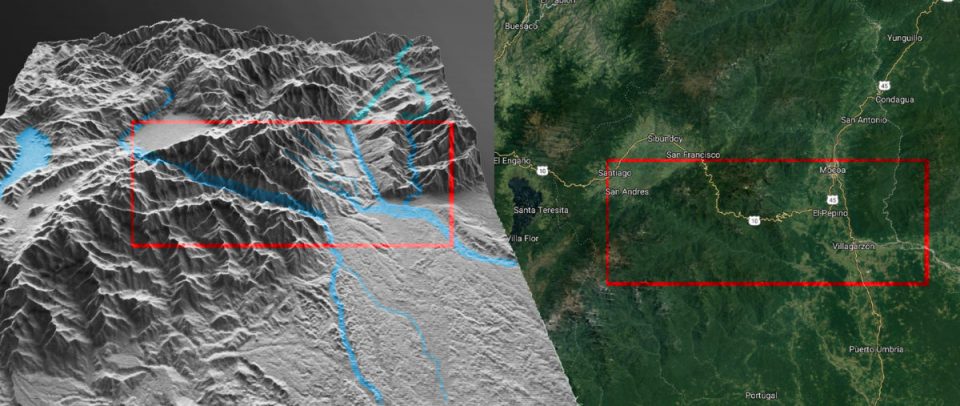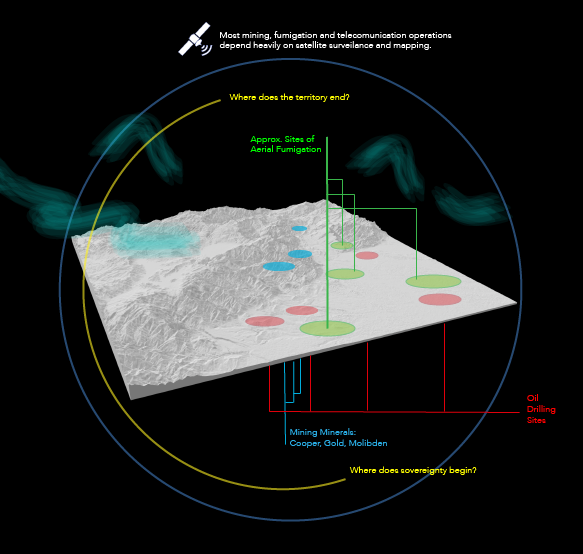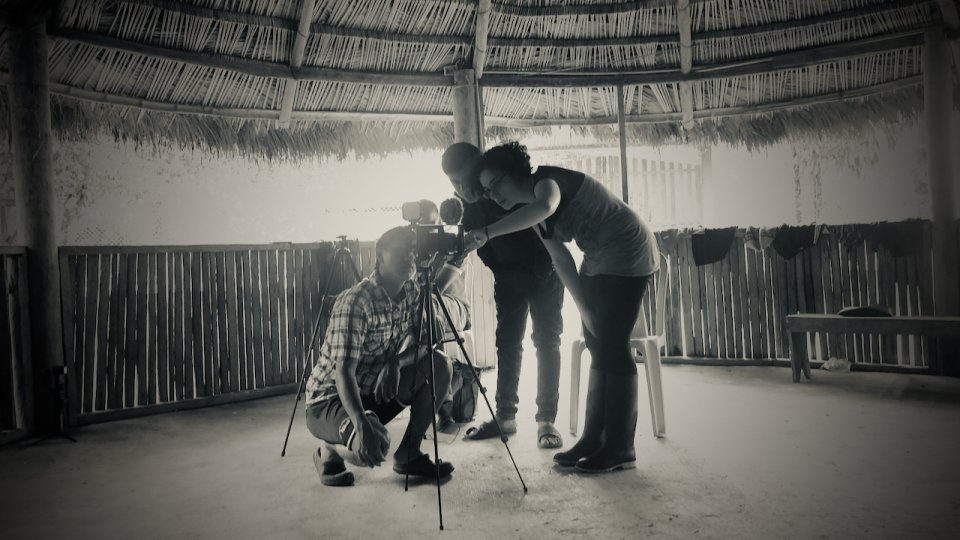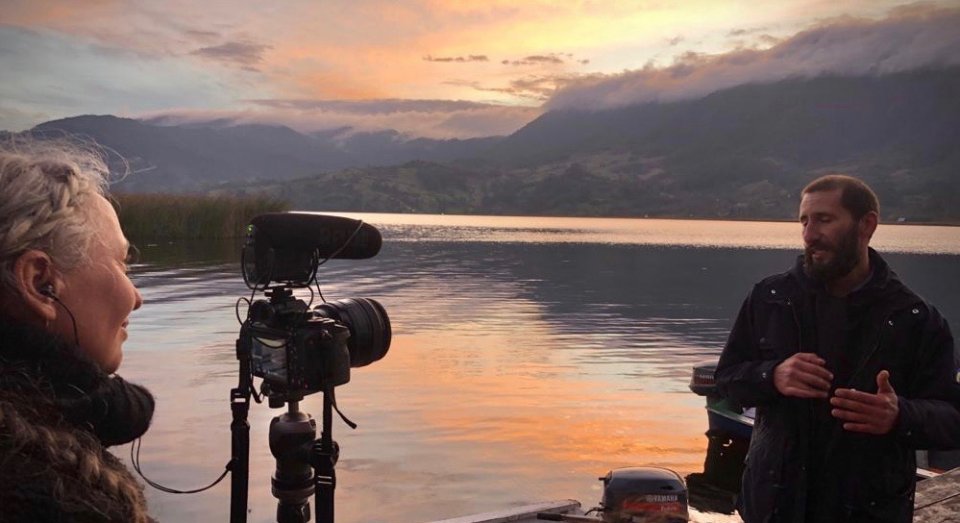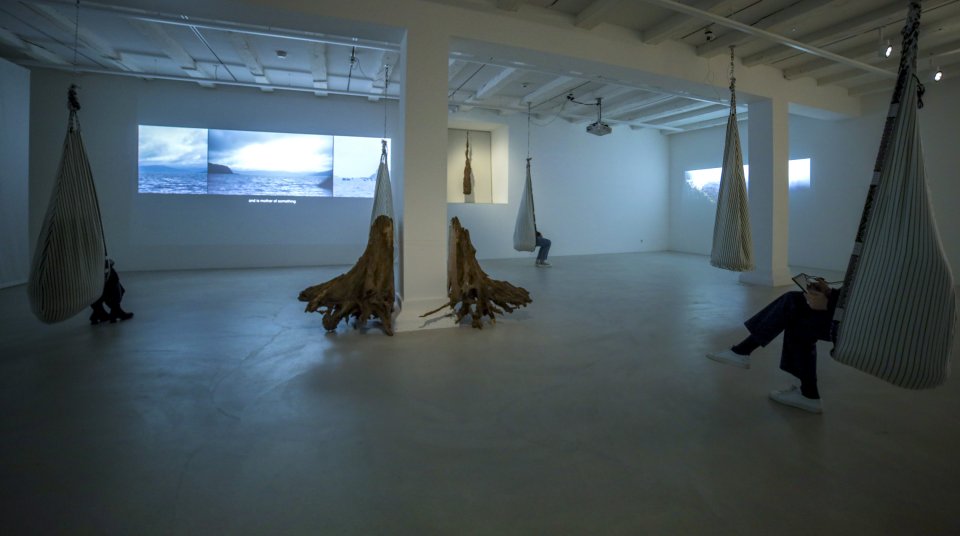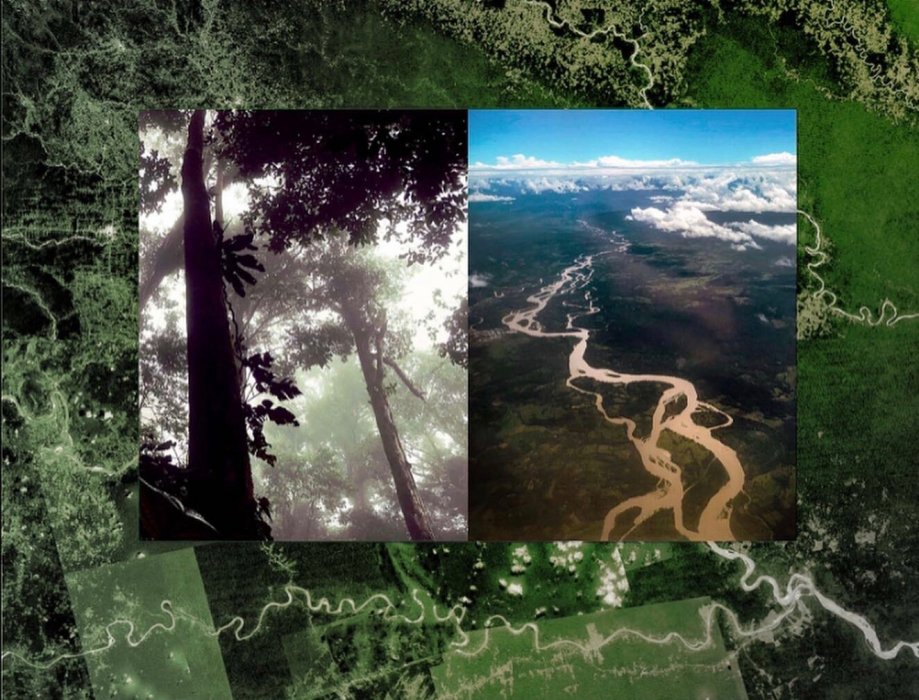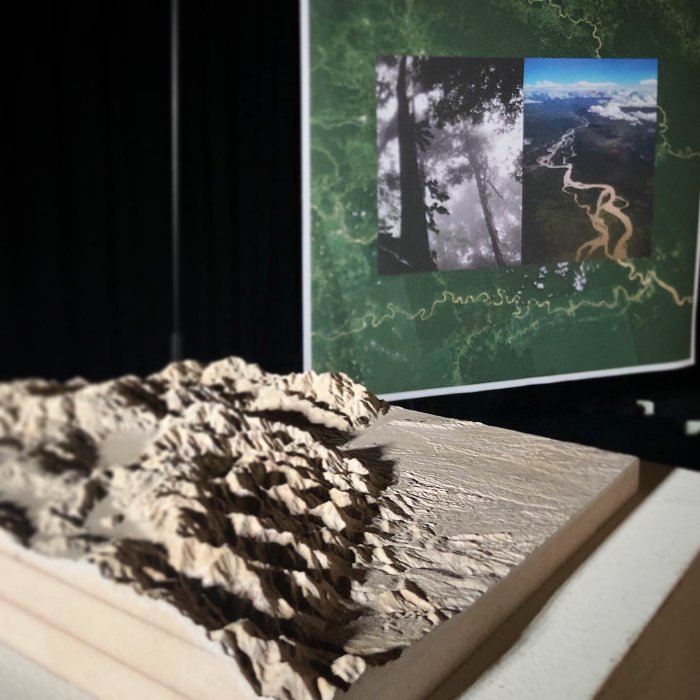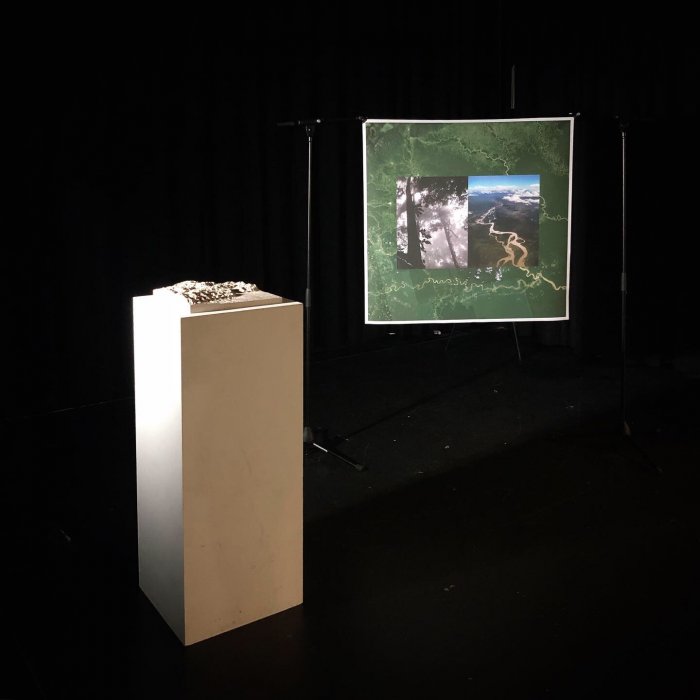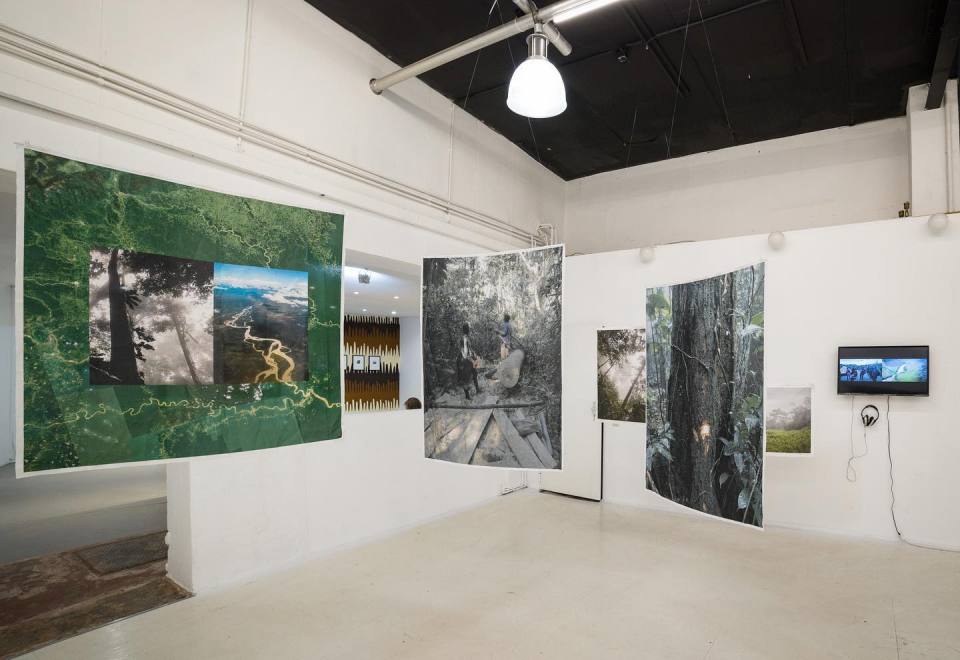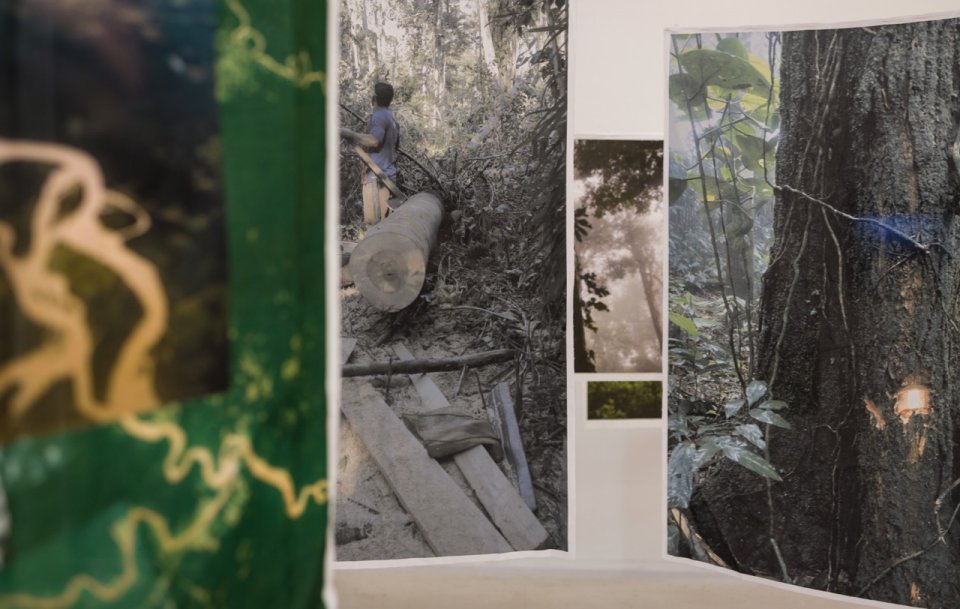Conceived as a practice-led research (2018 – 2021), this project investigates clashing territorial models that reveal cosmopolitical relations across obfuscated layers of occupation and governance above, over and below the ground. The central focus in the project is the Colombian Pan-Amazon region (between the high Andes and the lower Amazon) where government, extractive industries and indigenous state-building efforts compete for control, across a vertical axis of these contested ancestral territories. The project builds around A) ‘Filmic Cartographies’ documenting layers of sub-visbile and eco-social relations across the Pan-Amazon landscape and B) the co-creation of an indigenous Media Collective (Ñambi Rimai) that uses Media to support efforts of self-governance among indigenous nations, facilitate inter-epistemic dialogues and reveal modes of inter-existence across ancestral territories and beyond.
For centuries, the Pan Amazon region has been the epicentre of land-use disputes involving the oil and mining industry, illicit farming, colono settlers, parastatal armed groups, indigenous communities and the Colombian state. As a result, the region has been fragmented due to contested territorial claims from opposing powers, which render overlapping sovereignties. Its ecosystems have been severely disturbed by continuous forms of violence inflicted over the soils, forests, rivers, sky, as a well as ancestral communities and land-protectors. And finally, the ongoing process of colonisation (which also resulted in a one-sided form of development) has been able to suppress and negate ancestral knowledges, situated spatial practices and forms of assembly that today are at risk of disappearing. Nevertheless, the Pan-Amazon territories also foster diverse notions of resistance, eco-aesthetics, territoriality, forms of belonging and attuning, as well as embodied modes of coexistence between many forms of life (human and non-human).
Through a participatory-action-research approach, this project explores forms co-creation with indigenous communities undergoing a process of cultural and epistemological re-calibration. Therefore, it has developed in close dialogue with indigenous notions of territoriality, situated approaches to governance and decolonial sensibilities, seeking to establish bridges between various forms of knowing the territory. Drawing upon indigenous spatial-practices and aesthetics form the Inga, Kamnesta, Quillacinga and Siona nations, this practice-based research aims to formulate: 1) an inter-epistemic dialogue around land-use, territorial production and spatial-representation; 2) support the co-presence of indigenous aesthetics in the global spheres of knowledge, governance and cultural production; 3) and finally to co-create immersive experiences and participatory Media, which can contribute to recalibrate western approaches to territorial thinking, spatial aesthetics and inter-existence at a planetary scale.
Part A: A ‘Filmic Cartography’ Through Layers of a Planetary Landscape
Rio is an experimental film and installation developed after a series of trips upstream the Putumayo River in Colombia (2018-2020), going from the jungles in the Lower Amazon all the paramos in the way to the high Andean mountains. This film takes the viewer on a vertical journey aimed at exposing unlikely relations between the under and upper worlds and across indigenous ancestral territories. The journey upstream the river is rendered through a cinematic cartography that reveals a complex eco-social landscape extending across layers of occupation: from oil drilling sites and areal fumigation over indigenous lands, to satellite surveillance over the rainforest. The film follows a river that more than anything, depends on cloud formation and the fragile equilibrium of a vastly diverse region.
Along the Putumayo river, indigenous thought, trees, soils, clouds, humidity, light and shadow form an entangled territory, which has agency and its very own form of bio-political resistance.
Interview With Julio Fierro: Why the Putumayo?
In this film, geologists and professor Julio Fierro from Colombia’s National University discusses the relevance of the Putumayo as a unique ecosystem along the Ecuadorian geo-zone.
Putumayo River, Colombia. 2018
Part B: Participatory Territorial Research
Indigenous Media Collective: Ñimbi Rimai
Ñambi Rimai is a newly established Indigenous Media Collective operating in the Pan Amazon region, between the high Andes and the lower Amazon. This initiative emerged after a series of workshops and field work conducted by Felipe Castelblanco in 2018/2020 while working in close cooperation with the central government of the Inga Nation and Ambulante Colombia. The mission of the Media Collective is to support processes of self-governance, preservation of ancestral knowledge and spatial practices, as well as territorial control and communication all across the territories and beyond.
Approach:
Through this practice-based research I examine 1) epistemic shifts around territorial governance and 2) forms of territorial-thinking through the lens of indigenous governance, postcolonial agendas and participatory arts as a means for co-presence and co-production of knowledge. This study focuses on rendering landscapes in relation to a vertical axis, where depth (minerals and resource extraction, soils, hydrologies, etc), social terrains (sites for interactions between human and non-humans, knowledges and emerging forms of public assembly), and finally altitude (moving airborne particles, airspace, satellites, etc) reveal power relations that redefine territorial boundaries, sovereignty and entanglement between indigenous and non-indigenous spatial practices.
This vertical study of the landscape ultimately renders a cosmopolitical dimension of the territory that encompasses new coexisting spaces, hybrid spatial practices and other forms of knowledge production.
Methodology:
This practice-based approach to research is developed through a journey across a vertical landscape, with stages like mapping, navigation and devenir. Therefore, by using sensorial ethnography, forms of counter-mapping, participatory art, writing, video and installations, I seek to address planetary entanglements across different layers of space, from the underground to exosphere and in apparently remote and disconnected locations from the Global South.
As I argue, this method can be deployed in any given space to explore various relations extending through a vertical axis (in this case the Colombian Pan-Amazon region) and produce other forms of representation that can challenge traditional views over the landscape and territorial definitions. Also, I believe it is possible to recognise new frontiers of common [cosmopolitical] space beyond the framework of urbanism and colonial land-use logics, still very focused on granting ground-level rights to human communities, while failing to recognise other forms of life as inhabitants of the territory and reserving depth and altitudes for state control and extractive interests.
What I aim to know:
Until now, western epistemologies informing territorial regulation, resource extraction and ownership of space have fuelled a kind of human exceptionalism and the imposing rule of culture over nature. This attitude is still used to justify all sorts of irreversible interventions on the planet, while rendering public spaces (spaces for collectivity) as mostly flat, instrumental and urbanised. Therefore, this inquiry into the unseen seeks to recognize new sites, aesthetic sensibilities, knowledges, and modes of attachment that counterbalance the logics of world-spanning systems of: influence (geopolitics, global economy, environmental policy, knowledge, etc); exchange (connectivity, market-oriented global traffic, consumption, migration, etc) and dependency (resource extraction, markets, migrant labour, climate change, etc). Ultimately, this project aims to set in motion current interpretations of publicness by creating a dialogic space where: 1) It is possible to explore, understand and propose shifts in spatial-thinking through a participatory platform for art, research and pedagogy that navigates across disciplines and epistemologies (An Media Collective); 2) Develop a framework for art and knowledge production that embraces marginal aesthetic practices from the Global South, enabling new languages for aesthetic thinking applied to inter-existence and cooperation at planetary scales; 3) envision cultural policy (i.e. art as state-craft and policy design) capable of addressing vertically entangled territories and human-non-human interactions as a manifestation an ever expanding sphere for artistic intervention.
StoryMap with films presented as episodic film essays:
Research and development of this project has been possible through a Practice-Based PhD position with ECAM: European Center for Art, Design and Media Based Research at the Basel Art Academy HGK (Switzerland) in cooperation with the University of Arts Linz (Austria) 2017 – 2020

